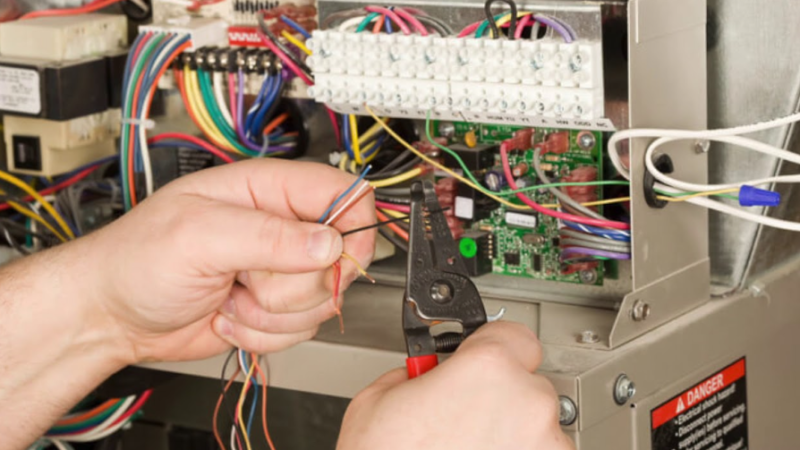Laptop Manufacturing Plant Project Report 2025

The global laptop market has experienced substantial growth over the past decade, driven by increasing consumer demand for portable computing devices in both personal and professional settings. Laptops, which offer the flexibility of mobility along with powerful computing capabilities, have become indispensable tools in various industries, from education to business, healthcare, and entertainment. Establishing a laptop manufacturing plant is a promising venture in this growing market, as demand continues to rise worldwide. This Laptop Manufacturing Plant Project Report outlines the market landscape, production processes, equipment requirements, regulatory considerations, and financial projections involved in setting up a laptop manufacturing facility.
Market Analysis for Laptops
The laptop market is diverse, with various categories ranging from budget laptops to premium ultrabooks and gaming laptops. The continuous advancement of technology and the increasing need for portability have significantly influenced the global demand for laptops.
Global Demand for Laptops
- Technological Advancements: Continuous innovations in laptop hardware, including faster processors, better graphics, lighter and more durable designs, and extended battery life, have made laptops more appealing to consumers.
- Work-from-Home and Remote Learning Trends: The COVID-19 pandemic accelerated the shift to remote work and online education, leading to a surge in laptop sales. Even post-pandemic, the demand for laptops remains high as hybrid work models become increasingly common.
- Gaming and Entertainment: The growing popularity of gaming and multimedia consumption has spurred demand for gaming laptops with high-performance graphics cards and superior display technologies.
- Business and Education: Laptops continue to be the preferred choice for students and professionals due to their portability, affordability, and functionality.
Consumer Trends
Consumers are increasingly demanding laptops that offer a balance of performance, portability, and affordability. Features like fast charging, long battery life, high-definition displays, and advanced processors are essential considerations when purchasing a laptop. Moreover, sustainability has become an important factor, with a rising preference for eco-friendly manufacturing practices and recyclable materials.
Get a Free Sample Report with Table of Contents@
Production Process for Laptops
The manufacturing of laptops involves several intricate steps, including component sourcing, assembly, and rigorous testing to ensure performance and reliability. Each laptop must be assembled with precision, ensuring all parts work seamlessly together.
Raw Materials and Components
The key components and raw materials required for laptop manufacturing include:
- Display Panels: LCD or OLED panels are used for the laptop screen. The display quality and size play a significant role in determining the laptop’s overall performance.
- Motherboard: The motherboard is the backbone of the laptop, connecting all the hardware components.
- Processors (CPUs): Central Processing Units (CPUs) are the primary powerhouses of the laptop, determining its processing speed and performance.
- Graphics Processing Units (GPUs): For gaming and graphic-intensive tasks, dedicated GPUs are necessary to ensure smooth performance.
- Memory (RAM): Random Access Memory (RAM) is required for smooth multitasking and fast data processing.
- Storage: Solid-State Drives (SSDs) or Hard Disk Drives (HDDs) are used for data storage.
- Battery: Lithium-ion batteries are typically used for laptops, providing the necessary power for mobility.
- Casing and Other Components: The outer shell is typically made from plastic or metal and contributes to the laptop’s durability and aesthetic appeal.
Manufacturing Steps
- Component Procurement: The first step involves sourcing the necessary components, including the motherboard, display panels, processors, memory, storage devices, and battery cells. Sourcing these parts from reliable suppliers is critical to maintaining the quality and performance of the final product.
- Motherboard Assembly: The motherboard is assembled by mounting processors, memory chips, and other essential components like power regulators and connectors onto the motherboard using automated machines. The motherboard is then tested for functionality.
- Display Panel Assembly: The display panel is integrated into the laptop casing. Depending on the design, the panel may be attached directly to the body or housed within a specific frame that holds the screen in place. Special attention is given to the display’s resolution, color accuracy, and responsiveness.
- Assembly of Other Internal Components: The storage devices, memory (RAM), and graphics cards are installed on the motherboard, followed by the assembly of other components, such as the keyboard, touchpad, and speakers.
- Battery Installation: The battery is securely connected to the laptop’s internal circuits, and the device is tested for power consumption, battery life, and safety standards.
- Final Assembly and Casing: Once all internal components are integrated, the laptop is enclosed within its casing. This casing is typically made from plastic, aluminum, or magnesium alloy to ensure durability and aesthetics. The laptop is then subjected to thorough checks to ensure that all components are securely installed.
- Quality Control and Testing: Every laptop undergoes extensive testing to verify functionality. This includes checking the processor speed, screen resolution, battery performance, memory capacity, and storage. Stress tests are also conducted to ensure the laptop can withstand prolonged usage and high-demand applications.
- Packaging: After passing all tests, the laptops are packaged with accessories like chargers, cables, user manuals, and warranty cards. The packaging is designed to protect the laptop during transport while being visually appealing to consumers.
Equipment Requirements for Laptop Manufacturing
Setting up a laptop manufacturing plant requires several specialized pieces of equipment to ensure efficient production and high-quality output. The following equipment is necessary:
Surface-Mount Technology (SMT) Machines
SMT machines are used for assembling and soldering components onto the motherboard. These machines automate the process of placing tiny components such as resistors, capacitors, and processors onto the circuit board.
Injection Molding Machines
Injection molding machines are used to manufacture the laptop’s plastic casing. These machines inject molten plastic into molds, creating the outer shell of the laptop.
Automated Assembly Lines
Automated assembly lines are necessary for efficiently assembling all the components, including the motherboard, display, battery, and casing. Robots and conveyors are typically used to move components from one assembly station to the next.
Testing Equipment
Testing equipment such as electrical testers, thermal testing machines, and battery life testers are crucial for ensuring the quality and performance of the laptops. This equipment ensures the functionality and safety of each unit before it reaches the market.
Packaging Machines
Packaging machines help automate the process of packing the finished laptops, ensuring that they are securely packaged for transport and retail display. These machines also label the boxes with product details, barcodes, and shipping information.
Regulatory Considerations
Manufacturers of laptops must comply with several regulatory standards to ensure their products meet safety, quality, and environmental requirements. Some of the key regulations include:
CE Marking (Europe)
Laptops sold within the European Union must comply with CE (Conformité Européenne) marking, which indicates that the product meets safety, health, and environmental standards.
UL Certification (U.S.)
In the U.S., laptops are typically required to undergo Underwriters Laboratories (UL) testing to ensure they meet safety standards, particularly in terms of electrical safety, battery performance, and fire resistance.
RoHS Compliance
The Restriction of Hazardous Substances (RoHS) regulation restricts the use of certain hazardous materials, such as lead, mercury, and cadmium, in electronic products, including laptops.
EMC Compliance
Laptops must meet Electromagnetic Compatibility (EMC) standards to ensure they do not cause electromagnetic interference (EMI) that could affect the functioning of other electronic devices.
Financial Projections for Laptop Manufacturing Plant
Establishing a laptop manufacturing plant requires a significant capital investment. However, with the growing demand for laptops and the continuous advancement in technology, it can be a highly profitable venture. The financial projections for such a project will depend on factors such as the scale of operations, production capacity, and market positioning.
Capital Investment
The capital investment required for setting up a laptop manufacturing plant includes:
- Land and Facility Setup: The cost of purchasing land, constructing the facility, and setting up utilities.
- Machinery and Equipment: The cost of SMT machines, injection molding machines, assembly lines, and testing equipment.
- Raw Materials: The procurement of components like processors, display panels, storage devices, and batteries.
- Labor: The cost of hiring skilled workers, engineers, and support staff.
Initial capital investment typically ranges from $10 million to $50 million depending on the size of the facility and production capacity.
Operating Costs
Operating costs will include:
- Raw Materials: Ongoing procurement of components such as processors, display panels, memory, and storage devices.
- Labor: Wages for production workers, quality control staff, and administrative personnel.
- Utilities: Power, water, and other essential services.
- Maintenance: Regular maintenance of machinery and equipment.
Revenue Projections
Revenue will be driven by the sale of laptops, with pricing based on the type of laptops produced (e.g., budget, gaming, or high-end models). Manufacturers can target different market segments, such as students, professionals, and gamers.
Break-even Analysis
The break-even point for a laptop manufacturing plant is typically reached within 3 to 5 years, depending on production efficiency, marketing strategies, and demand. The plant’s ability to scale production, innovate, and reduce costs will determine its profitability.
Media Contact
Company Name: Claight Corporation
Contact Person: Peter Fernandas, Corporate Sales Specialist
Email: sales@expertmarketresearch.com
Toll Free Number: +1–415–325–5166 | +44–702–402–5790
Address: 30 North Gould Street, Sheridan, WY 82801, USA





